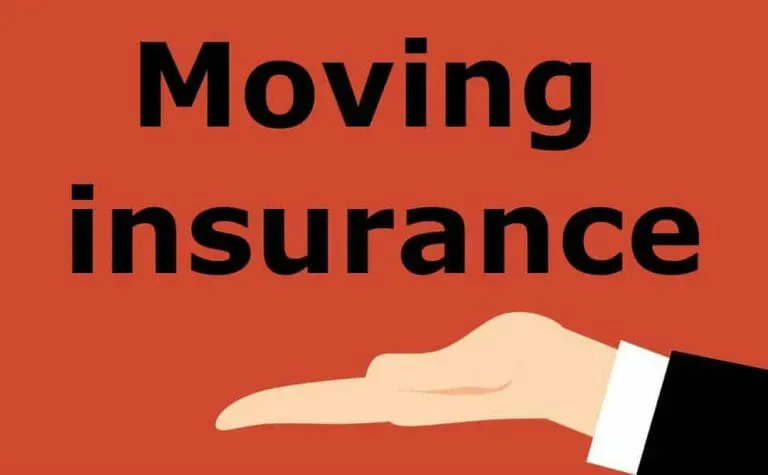
All people who have moved home can be very enthusiastic about their new location. However, excitement comes hand in hand with stress as people feel that their belongings might be in danger during the transport. This is where the mover’s insurance comes in as it protects possessions from damage, loss, or theft during the move. It is always pertinent to talk about and understand mover’s insurance in order to make the transition smooth and minimize risks.
- What Is Mover’s Insurance?
- Types of Mover’s Insurance
- 1. Released Value Protection
- 2. Full Value Protection
- 3. Third-Party Insurance
- 4. Homeowners or Renters Insurance Extensions
- Why Do You Need Mover’s Insurance?
- The Basics of Mover’s Insurance
- When Choosing Mover’s Insurance, These Things Should Be Kept in Mind
- 1. Analyze Yourself
- 2. Market the Policies
- 3. Homework Is Important
- 4. Have a Record of Your Possessions
- Tips for Filing a Claim
- Is Mover’s Insurance Worth It?
- Conclusion
What Is Mover’s Insurance?
Loss or damage of belongings during a move can be conveniently covered under a mover’s insurance, which is a special type of policy that people take. The moving company itself will cover a few damages and mishaps, but in many instances, it will not be able to cover the move entirely. Mover’s insurance tends to complete that gap and makes sure that people get reimbursed in case of unforeseen circumstances.
Types of Mover’s Insurance
Released Value Protection, Broad form protection, and Full Coverage are the three types of mover’s insurance one can select while moving:
1. Released Value Protection
This is the most basic coverage and is offered for free when you hire a moving company. However, this will not pay out in case of major damage, and one will only be compensated a small amount. Most lawsuits will be fueled by around $0.60 for every pound of the items per piece.
Example: When your TV, which weighs approximately 20 pounds, is destroyed, the maximum compensation you will be entitled to is $12.
2. Full Value Protection
Full value protection is the most inclusive coverage that puts the mover at risk of having to bear the full value of an item that is lost or damaged, or the full cost of repair of such an asset or item. This type of cover is offered at a price, which is paid in addition and is not without some boundaries or exclusions.
Example: If your TV is broken, the mover would fix it, replace it, or pay you its market value.
3. Third-Party Insurance
If you require wider coverage, it is possible to get a mover’s insurance via a third party. These policies can include things that the movers’ policy does not provide, such as coverage for expensive items like furniture or paintings.
4. Homeowners or Renters Insurance Extensions
In some instances, you can use your legal homeowners or renters insurance to cover the belongings you have during the move. Check with your insurer to see if such a thing applies and if you need more coverage.
Why Do You Need Mover’s Insurance?
As much as there has been practice to take the utmost care with respect to the movers, it is not a 100% effective principle. Here are the reasons why mover’s insurance is a prudent investment:
- Deterioration Risks: Items may end up on the floor, some might get scratched, others broken, or even damaging content during transit.
- Coverage for Theft Losses: Moving trucks are a common target for thieves, and insurance comes in handy to compensate for such losses.
- Peace of Mind: Having the assurance that someone will reimburse you in the event that your items get lost or damaged enables you to concentrate on more important things as far as your move is concerned.
The Basics of Mover’s Insurance
Every Mover’s insurance policy is relative to the organization, but in general, the following is covered:
- Accidents sustained while loading, moving, or offloading.
- Theft or loss of any kind.
- Some specific natural disasters (the policy will detail which ones).
Exclusions:
- Items you packed yourself in the case of self-packing (unless professionally inspected).
- Any merchandise which carries a high valuation (unless declared earlier).
- Damages sustained due to negligence in the packing or handling of the owner.
When Choosing Mover’s Insurance, These Things Should Be Kept in Mind
1. Analyze Yourself
There are valuables and some which are very delicate. When moving very costly belongings, full value protection and third-party insurance could be options worth considering.
2. Market the Policies
Write down policies from the moving company you are dealing with and that of any third-party providers. Exclusions, limits, and costs are also important.
3. Homework Is Important
Ask what is included in the coverage and what is not. Answers to queries such as:
- Does the policy cover natural hazards such as storms?
- Does the coverage have limits for specific objects?
- What are the procedures followed once claims are made?
4. Have a Record of Your Possessions
Prepare an inventory of all the items being moved and document their movement. Keep photographs as they will come in handy in the event of making a claim.
Tips for Filing a Claim
If you need to file a claim, follow these steps:
- Inspect Items Upon Delivery: Delivery should be confirmed only after the goods are inspected for breakage or absence of items.
- Report Issues Immediately: Contact your moving company or insurer about any issues sustained immediately.
- Provide Documentation: Submit a copy of the inventory, images of damaged items, and other documents relevant to the claim.
- Follow Up: Do not cease communication with the insurance provider until the claim is satisfactorily settled.
Is Mover’s Insurance Worth It?
Mover’s insurance is often a good idea, especially when moving long distances or when transporting high-value and easily breakable objects. While this incurs additional expenses when relocating, it can help prevent unwanted losses and worry.
Conclusion
As many would agree, insurance cover for the mover’s company is a big factor to consider when planning a relocation. With knowledge of coverage options, determination of individual needs, and selection of the appropriate policy, moving can be stress-free with valuables secured. Whether you choose basic coverage or premium coverage, securing your valuables will definitely enhance peace of mind during the moving process.



